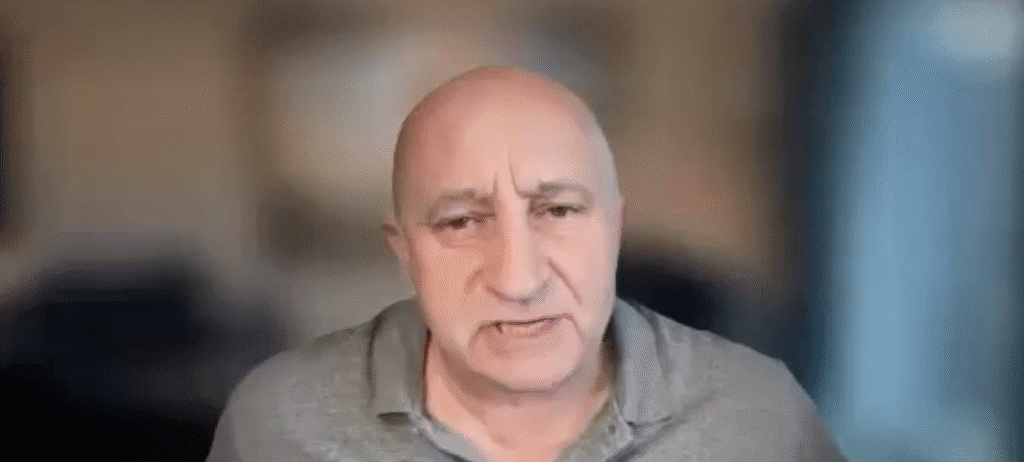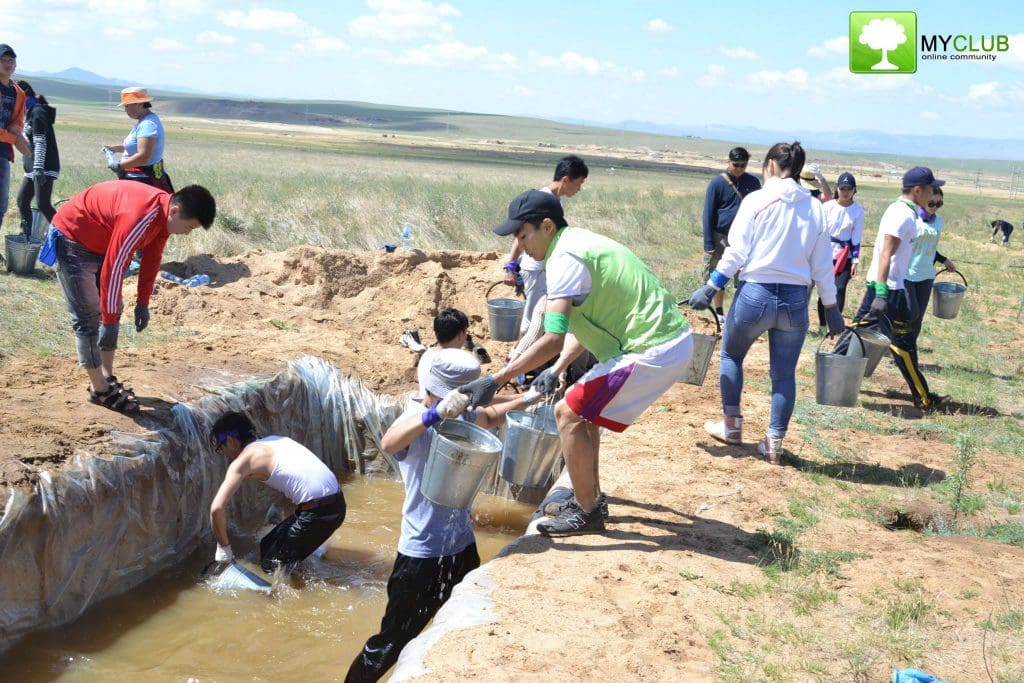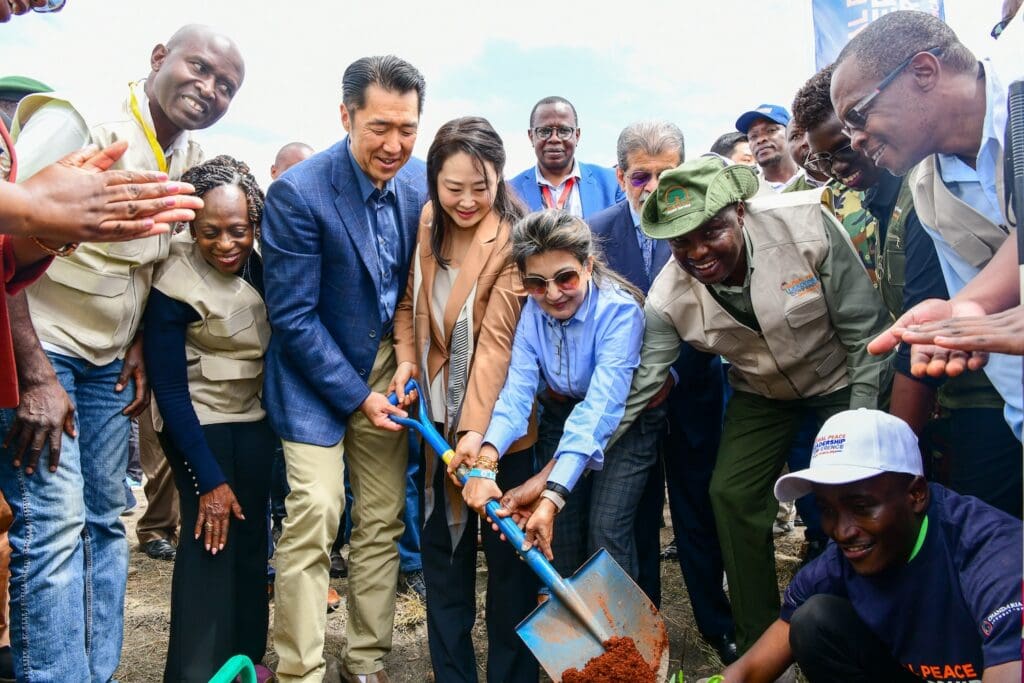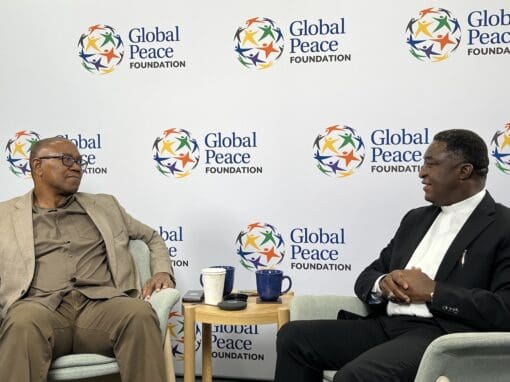
Reverend Mark Farr speaking during the inaugural GPCorps Global Network meeting
The Global Peace Foundation (GPF) launched the Global Peace Leadership Corps (GPCorps) in 2023 to equip young people with peacebuilding skills, a commitment to serving others, and a drive to address pressing global issues. Reverend Mark Farr, GPCorps program manager, opened the inaugural GPCorps Global Network meeting on September 18, 2025, which brought together close to 200 young people to explore the connection between initiatives addressing climate change and promoting peace. He encouraged “a youth-led movement” and called on “thousands of young people to act and take a role.”
Next, GPF strategic advisor David Caprara hosted the session, “Planting Peace: Environmental Service and the Global Peace Leadership Corps Vision,” which he noted furthers GPF’s vision of One Family Under God globally “with stewardship of our sacred environment.” He urged participants to “dream big and become owners of the Global Peace Corps in each of your nations.”

Participants plant trees during the GPLC Africa 2024 Kenya National Tree Growing Campaign
Mr. Caprara also referenced GPF founder and chairman Dr. Hyun Jin Moon’s dream for the peaceful unification of the Korean Peninsula, stating, “That dream of peace can be linked to the dream of national transformation in each of your countries, as well as today’s initiative for environmental service.” He highlighted three environmental service models currently underway: the Kenya Tree Nurseries, in collaboration with GPCorps and Chandaria Fellows, the Paraguay Chaco Model, and the Mongolia My Club Partnership. Each model offers insight into the power of young leaders to bring about positive climate change and promote sustainable peace.
Kenya’s green mission is to achieve a 30 percent forest cover by 2032 through a collaborative effort among GPF Kenya, the Chandaria Foundation, Mama Doing Good, and the KCB Foundation. As Mr. Caprara underscored, these organizations are empowering youth and communities by promoting tree planting and reforestation, community service engagement, and training in the value chain of tree growing. There are 17 active tree nurseries that span 13 counties, acting as hubs for environmental restoration and community engagement.
Furthermore, Kenya employs a holistic approach that represents a proven framework with a scalable impact and serves as a global reference. Several means were identified for contributing to the program’s success as a member of the GPCorps, including adopting a school nursery, sharing expertise, funding the program’s expansion, and creating global hubs. Daniel Juma Omondi, GPF regional representative for Africa, asked the young participants to join the team and work together to find solutions.
Moving to Paraguay, Issac Betancourt, project administrator of Atenil Paraguay, provided an overview of the Chaco Vivo project, the GPF carbon opportunity, and how to scale environmental protection into business. He noted that Chaco Vivo is Paraguay’s largest Reducing Emissions from Land Degradation and Deforestation (REDD+) project with an area of 187.16 hectares. Mr. Betancourt explained that “A carbon project is an initiative that reduces, avoids, or removes greenhouse gas emissions, then quantifies those impacts under an approved standard, such as VERA, and it issues these tradable credits that can be sold to finance the project and support community goals.” Over its 40-year lifespan, the Chaco Vivo project is expected to sequester 30 million tons of CO2 and generate 30 million credits.

Volunteers fill buckets for tree watering in Mongolia
Recognizing the amazing work of Gen Z in charting a green future and promoting peace in multiple countries, David Capara discussed the success of Mongolia’s My Club Online Community. Initiated in 2006, the program has involved 50,000 youths representing 6 generations in the planting of 2.1 million trees. Like the other environmental service models, he emphasized that My Club is linking planting trees to building peace.
The My Club work is ongoing. They met with Mongolia’s president to discuss the National Tree Planting Movement, which aims to plant one billion trees, as well as tree seedling resources and a youth volunteer program. Mongolia will be at the center of environmental conservation in 2026 when it hosts the UN World Desertification Summit, which is expected to attract 10,000 attendees at this COP17 event.
GPCorps team leader Rumit Walia also emphasized the work underway in Mongolia, highlighting the importance of young people’s involvement in environmental conservation and peacebuilding. He asked participants to support Mongolia’s Plant for Peace, One Tree at a Time campaign, aiming to create a “model of global youth solidarity” where everyone comes together to support Mongolia. Walking everyone through the donation page, he stated, “There are no borders on this planet for peacebuilders.”

Dr. Hyun Jin P. Moon and Dr. Junsook Moon plant trees during the GPLC Africa 2024 Kenya National Tree Growing Campaign
The session concluded with participants engaging in breakout sessions to share their experiences, stories, or ideas on the connection between the environment and peace, and to discuss global initiatives and strategies for strengthening movements, such as Plant for Peace. In a follow-up Q&A, a participant referred to the recent Gen Z protests in Nepal and other countries and asked how that energy can be harnessed for long-term environmental peacebuilding programs. Rumit Walia emphasized the power of social media as a tool to get the message out, commenting, “We have the picture. We have these movements, but I think we need to showcase it more.”
Responding to a participant’s question about how to become part of the team, Rev. Farr closed the webinar, encouraging attendees to participate through tree-planting fundraising and engage in peacebuilding activities, especially during the Month of Peace Challenge from September 21 to November 5.
As noted by Issac Betancourt, “The struggle for a greener tomorrow requires all of our participation. It is a multi-frontal, full-scale thing. I believe together we can create a green, peaceful future. We just have to remember that the fight for the environment is actually the fight for world peace. You cannot have one without the other.”
Learn more about the GPCorps
Read more about how to support Mongolia’s Plant for Peace, One Tree at a Time Campaign




